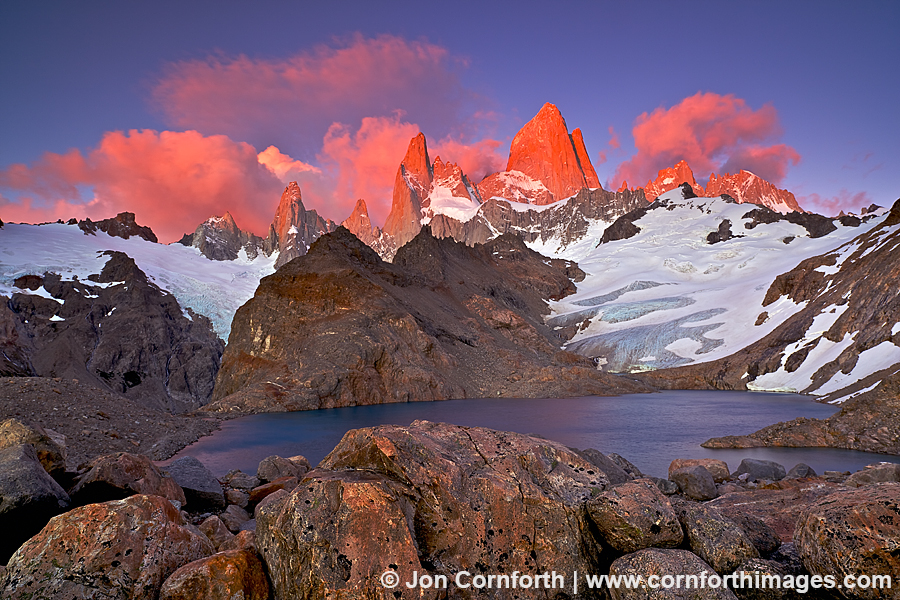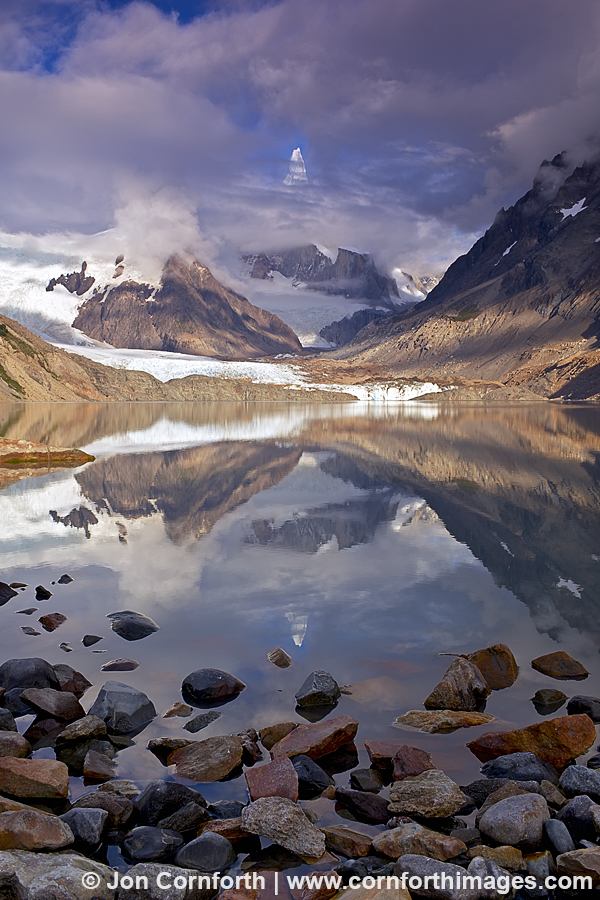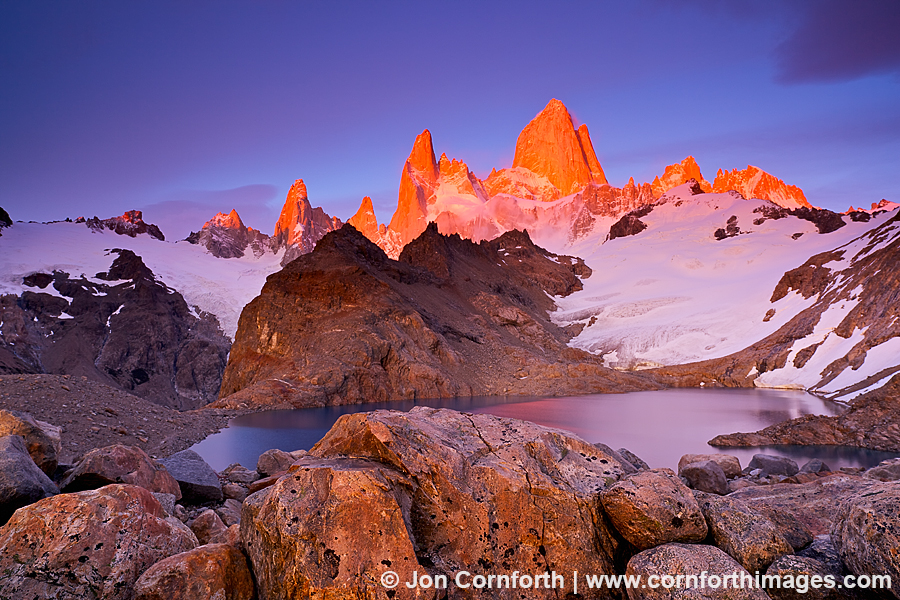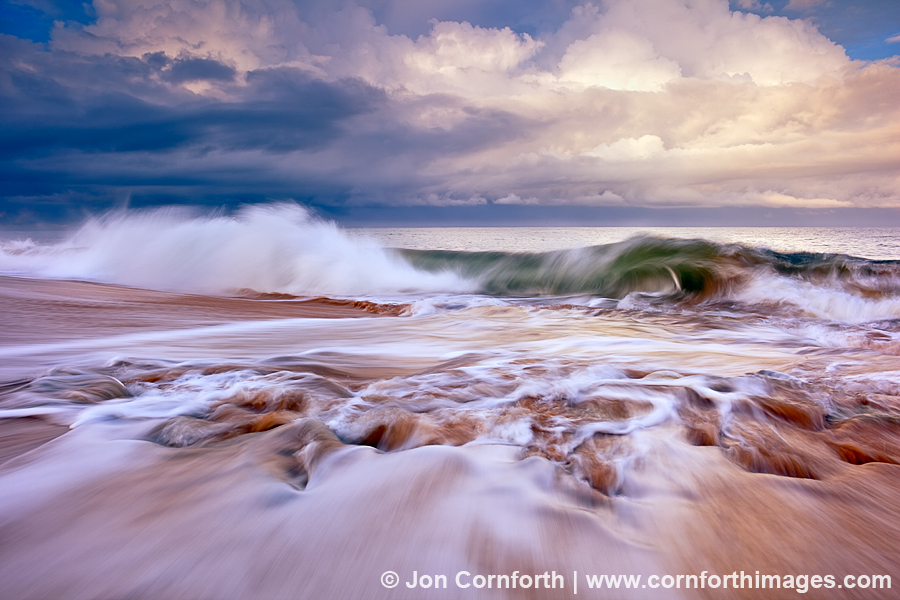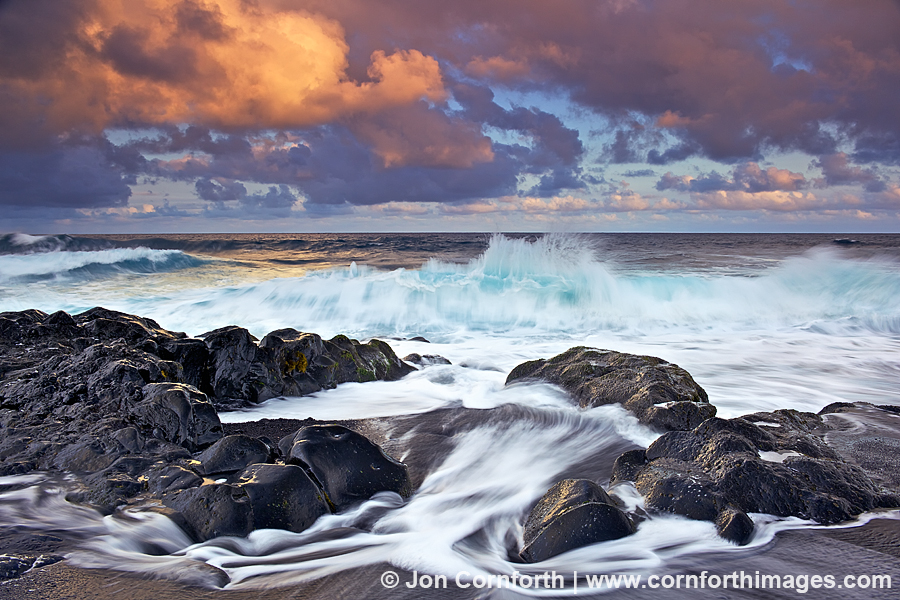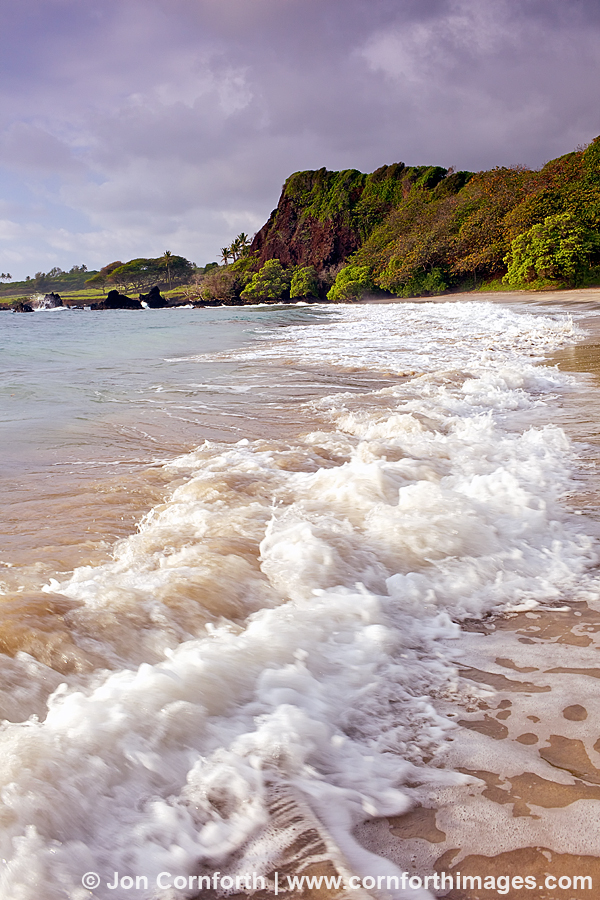Located in the Southern Andes Mountains of Argentina and Chile, Patagonia boasts some of the most dramatic mountains on Earth, including Mount Fitz Roy, Cerro Torre, and the Torres del Paine. Unfortunately, Patagonia also receives some of the world’s worst weather. Clouds obscure the mountains for weeks or even months at a time. This consistently awful weather makes photography in the region a lesson in monotonous boredom and disciplined patience. One of my old climbing partners from Alaska was down there the entire month of January and never got a good weather window long enough to climb anything significant. Over the course of my own 3 week trip, I was only able to see the summits at sunrise on 4 days, 2 of which I did not shoot because I was exhausted and frustrated back in town for the night rather than camping close to my objectives.
I visited Patagonia for the first time in March of 2007. During that trip, I experienced my only major camera failure in 10 years as a professional photographer. I had been shooting startrails the night before walking up to Laguna de los Tres with my old Pentax 67II and had drained the batteries. I was not worried because I always carry a spare set of batteries with me, but after 1 weeks of waiting patiently for a clear sunrise, I discovered that my spare set was also dead! That camera failure haunted me for the last 4 years. Knowing how few opportunities I would have because of the weather, I made photographing Mount Fitz Roy from Laguna de los Tres my main objective for my recent trip.
From the town of El Chalten, I backpacked up to Campemento Poincenot and established my basecamp 3 different times. From there, I walked uphill over 2 miles and 1500′ in elevation each morning to this spectacular viewpoint. I camped a total of 7 nights, waiting for the right conditions. Most of the mornings the weather was windy, cold, and wet, but I still dragged my butt up hill 4 times. This is probably my favorite image from my trip. I really like how the dark clouds above the summits intensified the alpenglow illuminating the mountains. The light only lasted for about 12 minutes, which meant I finally had 12 minutes for photography after 1 week of travel! I created this image using my Canon 5DmkII and Singh-Ray 3-stop Hard Graduated Neutral Density filter on a Carl Zeiss 21mm f2.8 ZE lens that Zeiss USA was kind enough to loan me for my trip. This image required minimal processing using Aperture 3.
